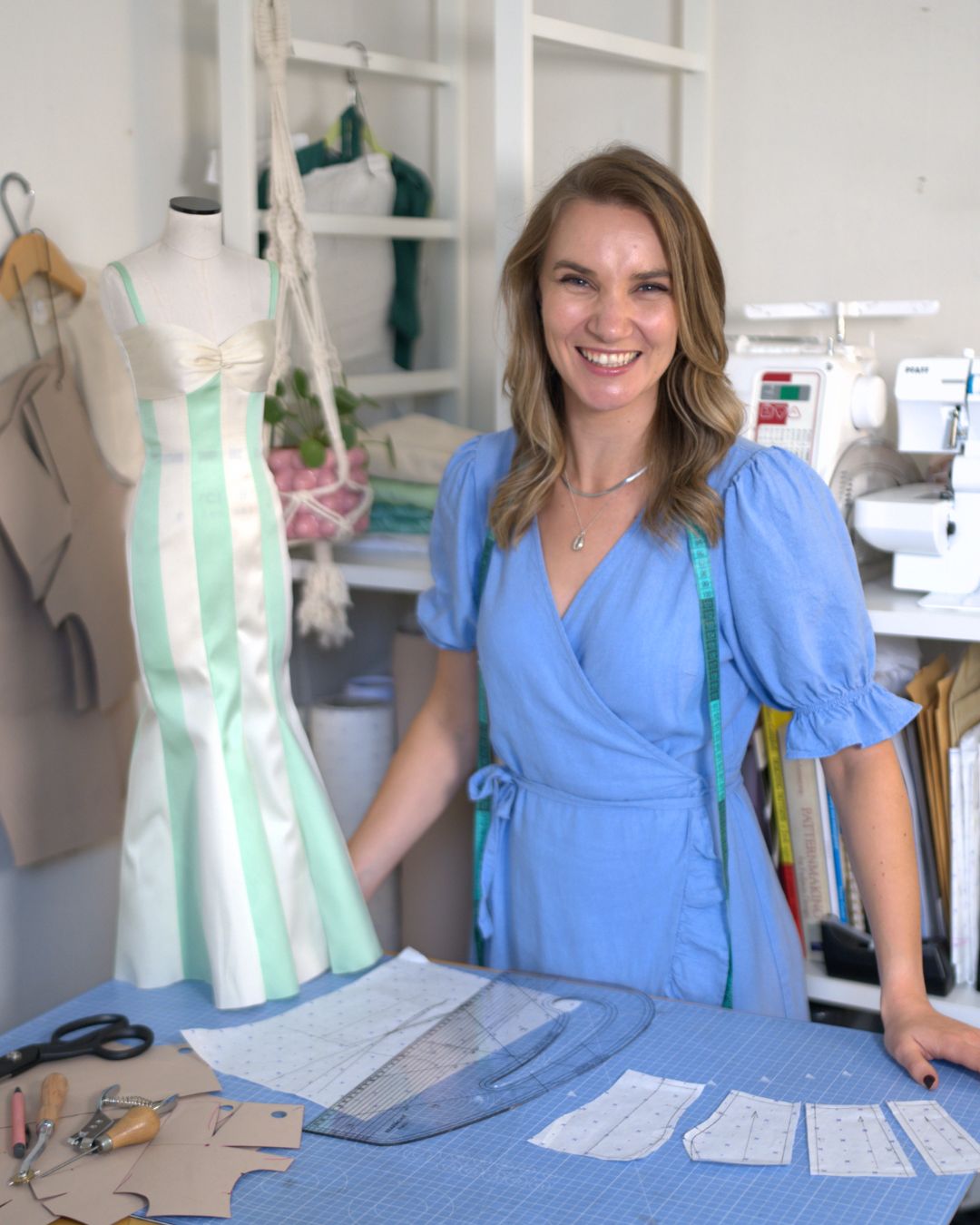Debunking Trouser Fitting Myths
Debunking Trouser Fitting Myths
If trousers keep throwing mystery wrinkles at you, you're not alone! Trousers are my most asked about garment, and one of the hardest to fit.
Most quick fixes chase symptoms, without exploring what might be causing the problem in the first place.
So when the "quick fix" inevitably upsets another part of the trouser it's impossible to tell what's gone wrong.
But if you understand how trousers work and how adjustments can interact, then you'll understand the knock on effects that changing them can have.
At Project Patterns I try to focus on the WHY behind the HOW.
To get us started in the trouser world, let's look at some common trouser fitting myths.
Five Common Myths
Myth 1, Sizing up fixes tight thighs
Going up a size adds volume everywhere, not just through the thigh. A better fix is a targeted thigh or leg adjustment, so the shape matches you without creating excess fabric around the waist or rise.
Myth 2, All crotch curves are the same
Bodies vary in crotch length, depth and shape. Which is why one curve rarely fits everyone. Measuring your body rise and crotch length, then placing the crotch seam where you sit and move, is the key to comfort.
Myth 3, Stretch fabric will hide fit issues
Stretch helps movement and allows for a tighter fit, but it does not correct balance or length. You still need a crotch shape and trouser balance that mirrors your body.
Myth 4, Drag lines are random
They point to the problem. Horizontal stress lines usually ask for more length or width where they appear, diagonal lines often point to balance or shaping and where the fabric is being pulled or twisted. Marking and reading balance lines turns guesswork into steps you can repeat.
Myth 5, A different brand will solve it
Pattern brands choose different ease and base shapes, but if your proportions differ, you will still repeat the same tweaks. A custom block fixes this at the source; you fit once, then design on top of that base.
If you would rather skip brand sizes altogether, draft a simple trouser block to your measurements, then fit and perfect it to reuse that base for every new style, I've got you covered.
That is exactly what we do in Draft & Fit a Trouser Block .

FAQ
Do I need a dress form to fit trousers?
No, fitting is easier with a helper, not a form. Instead of investing in a dress form, try joining a local sewing group and making new sewing buddies who can help you fit the back of your trousers.
Will stretch fabric fix fitting issues?
It improves comfort, but you still need to get the fundamentals right.
Is a second toile always necessary?
For most of us, yes! A second (and even third) toile confirms the changes that you've made and gives you a chance to fine tune the smaller issues.

